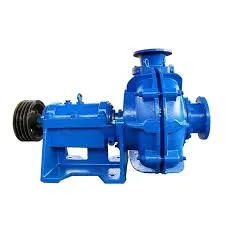Cebuano
- Afrikaans
- Albanian
- Amharic
- Arabic
- Armenian
- Azerbaijani
- Basque
- Belarusian
- Bengali
- Bosnian
- Bulgarian
- Catalan
- Cebuano
- Corsican
- Croatian
- Czech
- Danish
- Dutch
- English
- Esperanto
- Estonian
- Finnish
- French
- Frisian
- Galician
- Georgian
- German
- Greek
- Gujarati
- Haitian Creole
- hausa
- hawaiian
- Hebrew
- Hindi
- Miao
- Hungarian
- Icelandic
- igbo
- Indonesian
- irish
- Italian
- Japanese
- Javanese
- Kannada
- kazakh
- Khmer
- Rwandese
- Korean
- Kurdish
- Kyrgyz
- Lao
- Latin
- Latvian
- Lithuanian
- Luxembourgish
- Macedonian
- Malgashi
- Malay
- Malayalam
- Maltese
- Maori
- Marathi
- Mongolian
- Myanmar
- Nepali
- Norwegian
- Norwegian
- Occitan
- Pashto
- Persian
- Polish
- Portuguese
- Punjabi
- Romanian
- Russian
- Samoan
- Scottish Gaelic
- Serbian
- Sesotho
- Shona
- Sindhi
- Sinhala
- Slovak
- Slovenian
- Somali
- Spanish
- Sundanese
- Swahili
- Swedish
- Tagalog
- Tajik
- Tamil
- Tatar
- Telugu
- Thai
- Turkish
- Turkmen
- Ukrainian
- Urdu
- Uighur
- Uzbek
- Vietnamese
- Welsh
- Bantu
- Yiddish
- Yoruba
- Zulu
Telephone: +86 13120555503
Email: frank@cypump.com
Set . 01, 2024 22:46 Back to list
Vertical Mixed Flow Pump - Efficient Fluid Handling Solutions
Understanding Vertical Mixed Flow Pumps
Vertical mixed flow pumps are essential components of modern fluid transport systems, particularly in applications that require effective movement of water and other liquids. These pumps combine features of vertical and mixed flow designs, offering distinct advantages for various industrial and municipal applications.
Design and Functionality
The fundamental design of a vertical mixed flow pump incorporates a vertical shaft with impellers that are specifically angled to facilitate the mixed flow of liquids. This unique configuration enables the pump to handle larger volumes of fluid with relatively low energy consumption. The impellers can be found mounted on the vertical shaft, which is submerged in the fluid to be pumped. This setup minimizes the footprint of the pump, making it particularly advantageous for installations with space constraints.
The flow produced by these pumps is characterized as a combination of axial and radial flow. In other words, fluid enters the pump axially and is then propelled out radially by the impellers. This combination allows for increased efficiency, making vertical mixed flow pumps ideal for environments where varying flow rates and pressure requirements are encountered.
Applications
Vertical mixed flow pumps are utilized in a wide array of applications. One prominent use is in municipal water supply systems, where they are employed to transport large volumes of water from reservoirs to treatment facilities or directly to distribution networks. They are equally vital in agricultural settings for irrigation purposes, providing the necessary pressure to transport water across vast fields.
vertical mixed flow pump

In industrial contexts, vertical mixed flow pumps are employed in processes requiring cooling water, such as in power plants, chemical manufacturing, and pulp and paper production. Furthermore, these pumps play a significant role in stormwater management and flood control systems, effectively moving excess water to prevent overflow and mitigate damage during heavy rainfall.
Advantages
One of the key advantages of vertical mixed flow pumps is their ability to efficiently handle large volumes of fluid at moderate heads. The vertical orientation allows for a more compact design, saving valuable floor space while still ensuring optimal performance. Additionally, the submerged nature of the pump minimizes the risk of cavitation, a phenomenon that can severely damage pumps and reduce their lifespan.
Moreover, maintaining these pumps tends to be more straightforward compared to other types, as the design allows for easy access to mechanical components for servicing. With proper maintenance, vertical mixed flow pumps can operate reliably for many years, resulting in long-term cost savings for businesses and municipalities alike.
Conclusion
In conclusion, vertical mixed flow pumps play a critical role in enhancing fluid transport efficiency across various sectors. Their unique design and versatility make them indispensable in applications ranging from municipal water supply to industrial process management. With ongoing advancements in pump technology, these systems will continue to evolve and adapt, ensuring they meet the increasing demands for reliable and efficient fluid transfer solutions in the future. As industries and infrastructure continue to grow, understanding and utilizing the potential of vertical mixed flow pumps will be essential for efficient resource management and sustainable practices.
-
Heavy-Duty Mining Sludge Pumps - Wear-Resistant Slurry Handling
NewsAug.02,2025
-
Horizontal Split Case Pump with GPT-4 Turbo | High Efficiency
NewsAug.01,2025
-
ISG Series Pipeline Pump - Chi Yuan Pumps | High Efficiency, Durable Design
NewsAug.01,2025
-
Advanced Flue Gas Desulfurization Pump with GPT-4 Turbo | Durable & Efficient
NewsJul.31,2025
-
ISG Series Vertical Pipeline Pump - Chi Yuan Pumps | Advanced Hydraulic Design&Durable Construction
NewsJul.31,2025
-
ISG Series Vertical Pipeline Pump - Chi Yuan Pumps | Energy Efficient & Low Noise
NewsJul.31,2025










